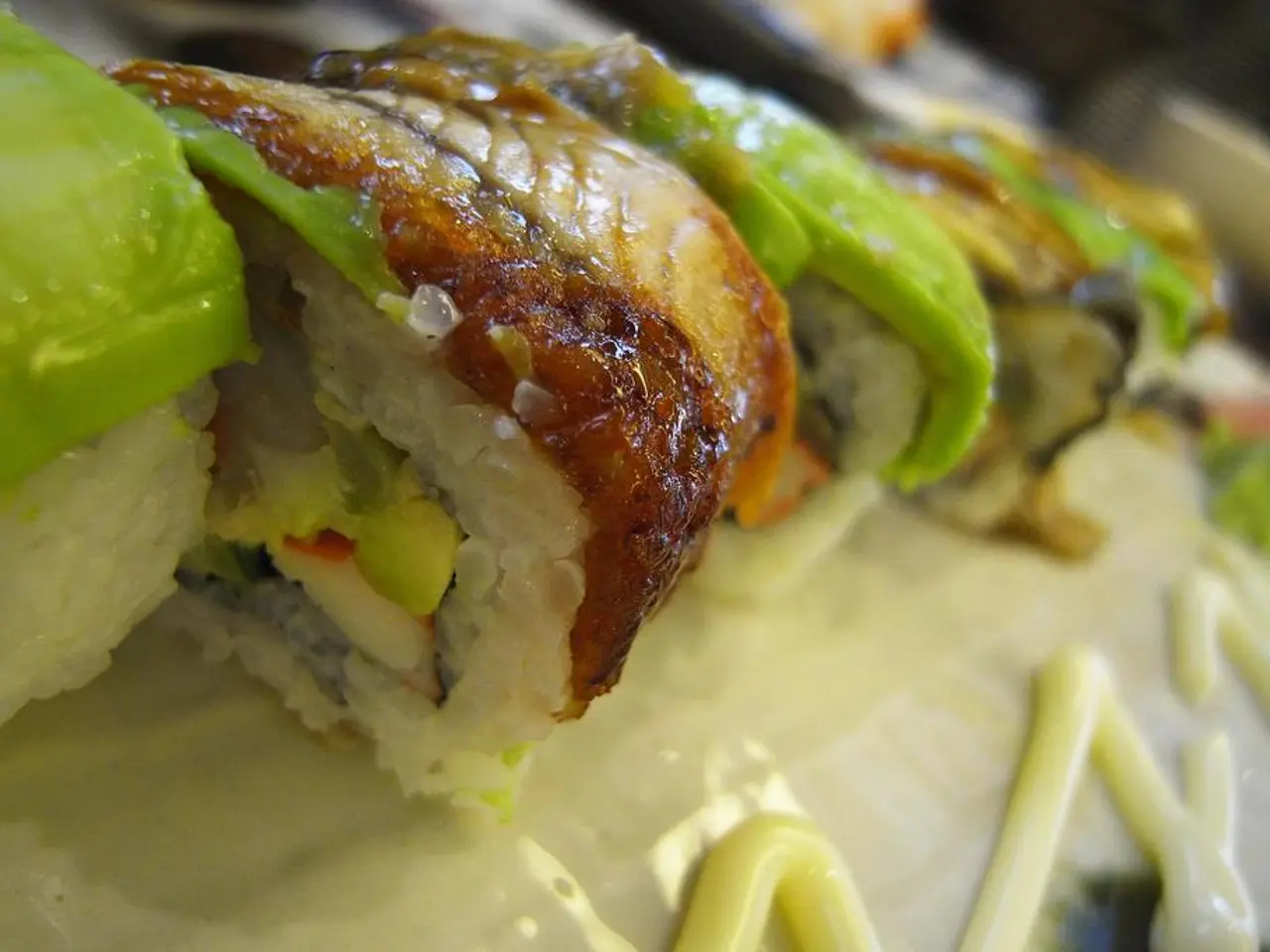Stroke recovery diet: Recommended foods for proper healing and nourishment
In the realm of stroke prevention and management, diet plays a significant role. Here's a breakdown of the key dietary approaches that can help reduce the risk of strokes, manage related conditions, and aid in recovery.
Stroke Prevention Diets
Three popular dietary patterns that have shown promise in stroke prevention are the Mediterranean Diet, the DASH (Dietary Approaches to Stop Hypertension) Diet, and the MIND (Mediterranean-DASH Intervention for Neurodegenerative Delay) Diet.
The Mediterranean Diet emphasizes an abundance of fruits, vegetables, legumes, whole grains, nuts, seeds, healthy fats (especially olive oil), moderate fish and poultry, and limited red meat. It supports vascular health and reduces stroke risk by lowering inflammation and improving cholesterol profiles.
The DASH Diet focuses on fruits, vegetables, whole grains, lean proteins (fish, poultry), low-fat dairy, nuts, and seeds, while restricting salt, sweets, saturated fat, and trans fats. It is particularly effective in lowering blood pressure to reduce stroke risk.
The MIND Diet, a hybrid of Mediterranean and DASH, targets neurological health and may improve cognitive function post-stroke.
Key Nutritional Components for Stroke Prevention
Certain nutrients have been identified as particularly beneficial in stroke prevention.
- Omega-3 fatty acids from fatty fish (salmon, mackerel, trout, tuna) and plant sources (walnuts, flaxseeds) reduce inflammation, improve blood pressure, and enhance blood vessel function, lowering stroke risk.
- Antioxidant-rich foods such as citrus fruits (oranges, lemons, grapefruits) provide vitamin C, potassium, and flavonoids that protect blood vessels and reduce inflammation.
- Fermented dairy products, especially yogurt, have been linked to a reduced stroke risk when consumed regularly in moderate amounts.
Management of High Blood Pressure and Diabetes in Stroke Patients
In addition to diet, certain lifestyle changes can help manage high blood pressure and diabetes, conditions that increase stroke risk.
- Limiting salt intake is crucial to control hypertension and reduce stroke risk, as emphasized in the DASH diet.
- Nutraceuticals such as polyphenol-rich cocoa flavanols and green tea have shown beneficial effects on lowering blood pressure, particularly in patients with type 2 diabetes and hypertension.
- Avoiding saturated and trans fats is important to control cholesterol levels, thus reducing vascular risk.
Addressing Swallowing Difficulties (Dysphagia)
People recovering from a stroke may experience difficulty swallowing, known as dysphagia. In such cases, the focus should be on nutrient-dense, easy-to-swallow foods rich in fruits, vegetables, whole grains, and proteins appropriate for texture tolerance. Maintaining adequate hydration and nutrition supports recovery and prevents malnutrition, a major concern in post-stroke patients with swallowing impairments.
Foods that can be easily modified for people with dysphagia include scrambled eggs, baked fish, minced meat, root vegetables, potatoes, avocados, oatmeal, yogurt, and bananas.
In conclusion, integrating these dietary approaches—rich in fruits, vegetables, whole grains, nuts, lean proteins, and healthy fats, with reduced salt, sugar, and unhealthy fats—supports stroke prevention, blood pressure control, diabetes management, and promotes recovery in stroke patients, including those with swallowing difficulties. If you or a loved one is recovering from a stroke, it's essential to consult a doctor or dietitian for advice on what to eat, especially if you have other health conditions that have their own dietary requirements.
- The Mediterranean, DASH, and MIND diets are three popular dietary patterns that potentially aid in stroke prevention due to their emphasis on heart-healthy foods.
- The Mediterranean Diet encourages eating an abundance of fruits, vegetables, legumes, whole grains, nuts, seeds, and healthy fats (such as olive oil) while limiting red meat to foster vascular health and reduce stroke risk.
- The DASH Diet stresses the consumption of fruits, vegetables, whole grains, lean proteins, low-fat dairy, nuts, and seeds while restricting salt, sweets, saturated fat, and trans fats to lower blood pressure and stroke risk.
- The MIND Diet, a mix of the Mediterranean and DASH diets, focuses on nutrients beneficial for neurological health, potentially improving cognitive function after a stroke.
- Omega-3 fatty acids, found in fatty fish and plant sources, reduce inflammation, improve blood pressure, and enhance blood vessel function, thereby lowering stroke risk.
- Antioxidant-rich foods, like citrus fruits, provide vitamin C, potassium, and flavonoids, which protect blood vessels and reduce inflammation, benefiting stroke prevention.
- In stroke patients dealing with hypertension or diabetes, it's important to avoid unhealthy fats (saturated and trans fats) to manage cholesterol levels and vascular risk.
- Nutraceuticals like polyphenol-rich cocoa flavanols and green tea may lower blood pressure in patients with type 2 diabetes and hypertension, making them beneficial for stroke prevention and management.
- When dealing with swallowing difficulties (dysphagia) post-stroke, focus on nutrient-dense, easy-to-swallow foods, such as scrambled eggs, baked fish, minced meat, root vegetables, potatoes, avocados, oatmeal, yogurt, and bananas, to support recovery and prevent malnutrition.




